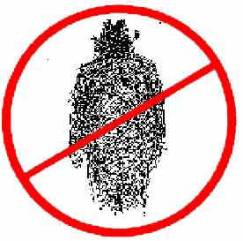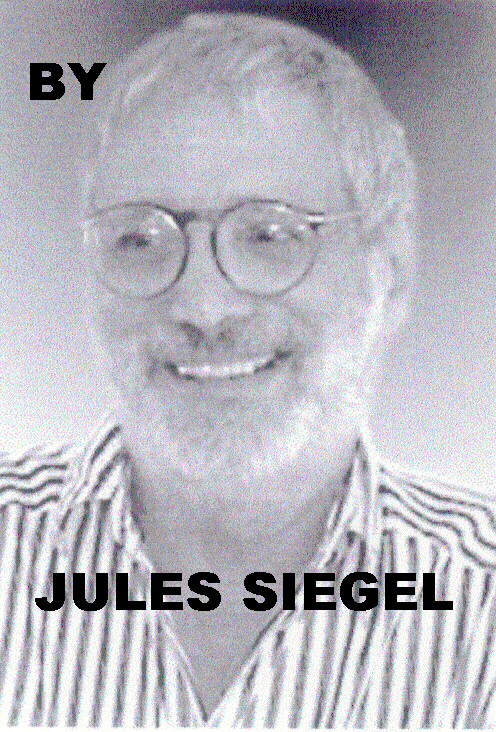
 sm
smCOLUMN NINETY-FIVE, AUGUST 1, 2003
(Copyright © 2003 The Blacklisted Journalist)
SECTION NINE

 sm
sm
COLUMN
NINETY-FIVE, AUGUST
1, 2003
(Copyright © 2003 The Blacklisted Journalist)
BOOK REVIEWS

THE
BUG
BY ELLEN
ULLMAN
NAN A. TALESE/DOUBLEDAY; 355 PAGES; $23.95
Ellen Ullman's novel,
The Bug, opens in the present, as Roberta Walton, a linguistics Ph.D who has become independently wealthy as a
computer programmer, waits at Immigration at San Francisco International while a
computer checks her out. The 30-second delay reminds her that in 1984, in her first programming job, she
helped create the very program that is now looking for her dossier. In an almost Proustian series of
flashbacks, the whole world of programming peril and joy unfolds with the narrative force of
a detective novel.
In this many-layered tale of love and suspense among the cubicles, Ellen Ullman dramatizes abstruse technical concepts and weaves
them into her story line so well that even the most hardened technophobe could believe in
Vincent Van Gogh as a programmer.
Ullman's Van Gogh is Ethan Levin, Intelligentsia Corporation senior engineer for client-side computing. It's his job to create the
electronic canvas that will appear on the user's screen, not a trivial task in 1984. A mysterious
user interface bug called the Jester (because it is so elusive and tricky) brings the project and the company to the edge of
disaster, and eventually causes Ethan's life to crash.
Roberta Walton describes herself as "a vagabond scholar of the 1980s Ph.D glut"---Yale, Phi Beta Kappa, a doctorate in the
linguistics of poetics---then a "downward spiral of junior colleges, night schools,
and adult ed, teaching Introduction to Linguistics again and again." Fed up, she's become
a novice quality tester at Intelligentsia, where she
teaches herself programming on the job in her quest to find the bug as Ethan melts down.
While Ethan recalls Stern, Bruce Jay Friedman's classic Jewish neurotic, Roberta is one of those unflappable modern women who keep
the overburdened corporation afloat and on course while male egos deconstruct.
The Bug takes the techno-novel to a new level of literary excellence, as compelling as Neal Stephenson's
Cryptonomicon but much more realistic. Non-technically inclined readers may hesitate at the
snippets of programmers' code embedded in the text. They can easily be ignored without
significant penalty, but Ullman deftly makes a line of code such as "coord->row <=region->startrow + region->width + 1)" an
almost heart-stopping moment in her plot for those who pay attention to her careful
explanations. These elements are her Chrome Yellow and Payne's Grey.
She writes, "The whole enterprise of computing---code embedded in hardware, comprising the operating system, the network, the utility
layers, the user interface, the final user-oriented application---was simply too complex for
every last mistake to be found and fixed."
The bug's random malice mirrors the ultimately psychological nature of human reality. There is no justice, only the perfectly logical
insanity of cause and effect. Every page of The Bug means
'The
Bug' takes
the techno-novel to a new level
of literary excellence
exactly what it says it means, but
by the end it's clear that all the layers of meaning observed in retrospect were there all along.
Ullman resembles Kafka in the way she writes so vividly and clearly about states of paranoid anxiety. Unlike the meaningless
persecution of The Trial, however, guilt in The Bug derives from error---but what error and
whose? This is a mystery novel without violence. Yet The Bug never becomes
a mere thriller. Her characters remain fully human even when they hint at archetypical significance. Here's Ethan seeing his wife
arrive at the
airport:
"It's naked, her arm, bare in the sleeveless orange blouse, soft and rounded and naked---and Ostrick just barely touches its underside
with the tips of his fingers. And as he does, Joanna's entire body responds."
Ullman's material is complex, but her style is always lucid. She's like an anatomist, stripping back the skin and delineating the
hidden structures that give the body form, showing how the human-like qualities of the
computer are at once genuine attributes and mere mechanical mimicry.
We think of the mystery as a universal form, but few have ever witnessed a murder, much less carried one out or searched for a
killer. The computer is our time's electric guitar. Many work as programmers; many
more struggle and exalt daily in front of computer monitors.
Ullman depicts a world that is mostly ignored in mainstream media. Anyone who uses a digital device knows what it's like to hit a
bug. Power users---the elite who actually know how to use the computer as more than a
typewriter---will have confronted the crucial but invisible error that must be hunted down and corrected before work can proceed.
The universal creative struggle is reflected in The Bug with exactly that
ambiguous fun house curve of the reflections in a computer monitor. This is magnetic fiction that will attract a very large and
enthusiastic cult
Jules Siegel's writings have appeared in Playboy, Esquire and, most recently, Library of America's "Writing Los Angeles."
JULES SIEGEL
http://www.cafecancun.com/bookarts/jsiegel.htm
Apdo 1764 77501-Cancun Q. Roo Mexico 1[52-998]883-3629
Newsroom-l, the news and issues discussion list for journalists http://www.newsroom-l.net ##CLICK HERE TO GET TO INDEX OF COLUMN NINETY-FIVE
CLICK HERE TO GET TO INDEX OF COLUMNSThe Blacklisted Journalist can be contacted at P.O.Box 964, Elizabeth, NJ 07208-0964
The Blacklisted Journalist's E-Mail Address:
info@blacklistedjournalist.com

THE BLACKLISTED JOURNALIST IS A SERVICE MARK OF AL ARONOWITZ